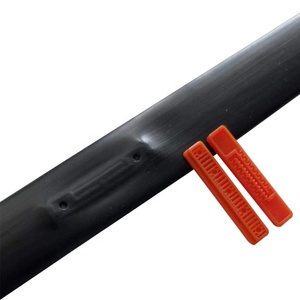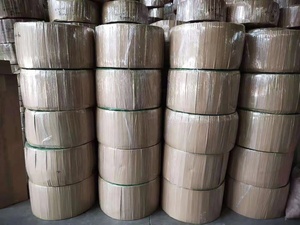(15663 products available)







































































































































































































































A drip irrigation system is a method of watering plants that provide water drop by drop directly to the plant's roots. This system is very efficient because it minimizes water loss by evaporation or runoff. Drip irrigation systems can be classified into two main categories: surface and subsurface. Within these categories, there are various types of systems.
Surface drip irrigation systems
Surface drip irrigation systems deliver water to the soil surface. The systems are visible above ground and are easy to install and maintain. The systems are ideal for various applications, including row crops, trees, gardens, and landscaping.
Subsurface drip irrigation systems
The systems are buried below the soil surface, allowing for direct watering of plant roots. The systems are hidden from sight and are less likely to be damaged by external factors. Subsurface systems reduce water evaporation and minimize weed growth. They are ideal for crops with tillage and permanent plantings.
Other ways to classify a drip irrigation system is by material, pressure, or source. Some common types include:
Drip tape:
Drip tape is a thin, flexible material, usually made of polyethylene. It is best for annual row crops and is cost-effective for large areas. The tape has built-in emitters and is ideal for delivering water to the soil surface.
Drip tubing:
Drip tubing is thicker and more durable than tape. It is suitable for both permanent and temporary crops. The tubing can withstand higher pressures and is ideal for areas with rocky soil.
Emitters:
Emitters, also known as drippers, are devices that control the water flow from the mainline to the drip tubing. They come in various flow rates and are suitable for different plant species. Some common types include pressure-compensating, non-pressure compensating, and film emitters.
Filters:
Irregular shaped particles can clog the emitters and reduce the efficiency of the drip irrigation system. Filters remove such particles from the irrigation water. Some common types include screen, disc, and sand filters.
Fittings and connectors:
These are devices that connect the various components of the drip irrigation system. Some common types include insert fittings, threaded fittings, and compression fittings.
Pressure regulators:
Pressure regulators control the water pressure in the drip irrigation system. They ensure that the pressure is constant and within the emitter's range.
Valves:
Valves control the flow of water in the drip irrigation system. Some common types include manual valves, automatic valves, and electric valves.
Control Valves:
These are responsible for regulating water flow in the entire irrigation system. They can be manual or automatic to allow for easy operation of the system.
Pressure Regulator:
It reduces the water pressure from the main supply line to the desired pressure for the drip system. This is important so that the emitters do not burst and also save on energy costs.
Filtration System:
This is important since it removes all debris and foreign particles from the water before it enters the drip lines. If not filtered, such particles can clog the emitters and stop water from dripping into the plants.
Mainline and Submain Lines:
The main supply line carries water from the source to the field. The submain line further distributes water from the mainline to different sections of the field.
Drip Lines/ Tubing:
These are the lines through which water is directly delivered to the plants. They are specially designed to have emitters at regular intervals to cater for different types of crops.
Emitters/ Drippers:
These are small devices attached to the drip lines that control and release water from the tubes to the plants. They come in various designs depending on the type of crop, field layout and water pressure.
Connectors and Fittings:
These are used to join different components of the irrigation system together. They include various types of connectors, tees, elbows, and end caps to ensure that water flows seamlessly through the entire system.
Tape or Bags:
In the case of a drip irrigation system drip tape, it can be rolled in a bag or taped. Drip irrigation bags are similarly rolled or folded for convenient storage and application.
Support Structures:
These are trellises, stakes or any other support that may be required to hold the drip irrigation tape or tubing in place so that it functions effectively.
Pressure Compensating Devices:
These are devices that maintain a constant water output from the emitters even when the pressure of the water supply changes. They ensure uniform dripping under varying pressure conditions.
A drip irrigation system is an efficient way to water crops. It has many uses in different areas.
Commercial agriculture
Farmers use drip irrigation for large fields of vegetables, fruits, and nuts. It gives plants the right amount of water they need to grow well. Farmers can also adjust the system to supply water during different growth stages.
Turf and landscape irrigation
Landscapers use drip irrigation to water gardens, lawns, and ornamental plants. This system saves water and keeps plants healthy. It is suitable for both residential and commercial landscapes.
Greenhouse irrigation
Greenhouse operators use drip irrigation to control water in a protected environment. This system is suitable for growing delicate plants or those needing constant moisture.
Orchard irrigation
Drip irrigation is excellent for watering fruit and nut trees in orchards. It saves water and helps trees develop better.
Vineyard irrigation
Wine grape growers use drip irrigation to manage water in vineyards. It helps grapes ripen evenly, improving wine quality.
Desert agriculture
In areas like the Middle East, where water is scarce, people use drip irrigation to grow food. This method saves water in arid regions.
Vertical gardens and rooftop gardens
Drip irrigation systems are suitable for watering vertical gardens and rooftop gardens in urban areas. They save water and ensure all plants get enough water in limited spaces.
Rainfed crop support
Farmers who rely on rainfed crops can use drip irrigation during dry spells. It helps keep plants healthy when there is no rain.
Wholesale buyers need to consider these factors when selecting a drip irrigation system for commercial gardening projects.
Garden Type and Crop Selection
Match the drip irrigation system with the garden type and crops. For example, fruit and vegetable gardens need systems that deliver more water. Flower gardens can use simpler systems. Consider the plants' water needs, growth patterns, and root depths.
Scalability and Expandability
Choose a system that can grow with the garden. Look for systems that let users add more drip lines, emitters, and zones easily. This is important for gardens that may expand their planting areas in the future.
Water Source and Supply
Ensure the drip irrigation system matches the water source. Check if the system works with city water, wells, ponds, or rainwater harvesting. Also, evaluate the water supply's pressure and volume to ensure it meets the system's needs.
Material Quality and Durability
Choose systems with high-quality, long-lasting materials. Look for UV-resistant polyethylene or PVC pipes that can survive weather changes and soil conditions. This reduces the need for replacements and saves costs in the long run.
Ease of Installation and Maintenance
Opt for systems that are simple to set up and maintain. Clear installation guides and few components save time and labor costs. Also, consider systems that need little regular checks and servicing.
Emitters and Drip Lines
Choose the right drip lines and emitters for the plants. Adjustable emitters let users change the water flow for different plants. Sub-surface drip lines provide water below the soil surface for root development. Pick the ones that suit the gardening needs.
Filtration and Pressure Regulation
Include filters to remove debris and prevent clogging of the emitters. Pressure regulators balance water pressure in the system. These two components help the system run smoothly and have a long life.
Cost and Budget
Keep the total cost and budget in mind. Consider the initial costs and the long-term expenses for maintenance and water savings. Sometimes, spending more at first gives better quality and efficiency in the long run.
Q1: How often should the drip irrigation system be checked?
A1: The system should be checked at least weekly during the growing season to ensure all plants are receiving enough water. Any broken parts or blocked emitters should be fixed as soon as possible.
Q2: Can a drip irrigation system be automated?
A2: Yes, many drip irrigation systems can be automated using timers or automatic controllers that turn the system on and off at designated times.
Q3: What type of water can be used in a drip irrigation system?
A3: Drip irrigation systems can use various types of water, including freshwater, recycled water, and rainwater. However, the water quality should be assessed to ensure it does not clog or damage the system components.
Q4: Can a drip irrigation system be used indoors?
A4: Yes, drip irrigation systems can be used indoors, especially for potted plants, indoor gardens, and vertical gardens. It provides precise watering and minimizes water waste and humidity.
Q5: How long should water be applied using a drip irrigation system?
A5: The watering duration depends on the plant's water needs, soil type, and system pressure. Typically, it ranges from 30 minutes to 2 hours. It's important to monitor the soil moisture and adjust the timing accordingly.